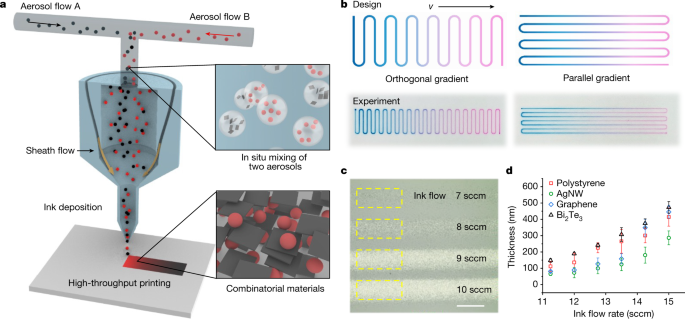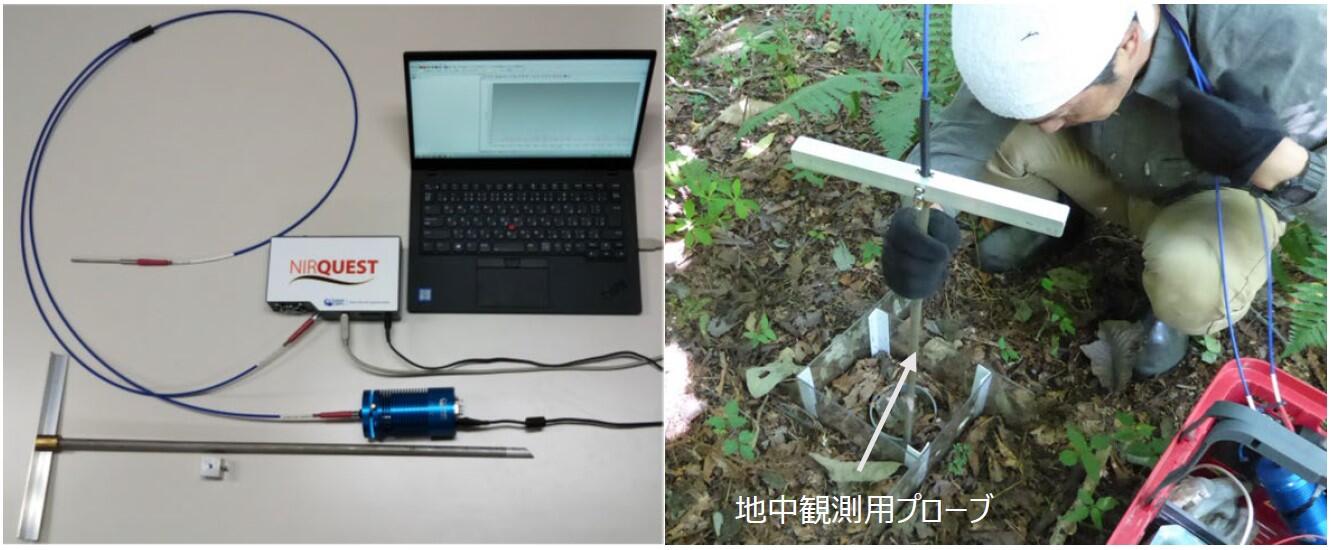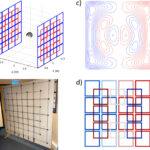2023-05-15 アメリカ合衆国・ノートルダム大学

・ ノートルダム大学が、新材料の迅速な開発を促進する 3D プリンティングの新手法となる、「ハイスループット・コンビナトリアル・プリンティング(HTCP)」技術を開発。
・ エアロゾル化した複数種類のナノ材料インクを単体のプリンティングノズルで混合し、プリンティングしながらインクの混合比率を変化させる。プリント作製した材料の 3D 構造と局所的な組成の両方を制御し、ミクロスケールの空間分解能の傾斜組成と特性を有する材料を作り出す。
・ 試行錯誤による新材料の発見には 10~20 年の長い時間と多大な労力が費やされるが、このことがクリーンンエネルギーやエレクトロニクス、バイオ医療デバイス等で早急に必要とされる新技術の開発を阻んでいる。新技術は、新材料開発期間の大幅な短縮を可能にする、この分野のゲームチェンジャーとして期待できる。
・ 新技術では、多種類の金属、半導体や誘電体、さらにポリマーやバイオ材料まで極めて広範囲の材料が使用でき、それぞれが数千種類にも上る独自の組成を含む「ライブラリー」として機能する、コンビナトリアルな材料の製造を可能にする。
・ コンビナトリアル材料のプリンティング製造とハイスループットな特性を組み合わせることで、新材料の発見を飛躍的に加速する。新技術を通じ、エネルギーハーべスティングやクーリングのアプリケーションに期待できる優れた熱電特性を持つ半導体材料をすでに特定している。
・ 新技術は、新材料の発見速度向上に加え、硬性から軟性へと組成が段階的に傾斜する傾斜機能材料(FGM)の作製も実現する。柔軟な身体細胞と硬いウェアラブルやインプラントデバイスをつなぐ、バイオ医療アプリケーションにおいて特に有用となる。
・ 次には、機械学習と AI を利用した手法をデータリッチな HTCP に適用し、様々な材料の発見と開発を促進する。将来的には、研究者がより高レベルの思考に集中できるような、新材料発見やデバイス製造の自律運転プロセスの開発を構想。
・ 本研究は、米国立科学財団(NSF)、米国エネルギー省(DOE)および DOE の Advanced Sensors and
Instrumentation プログラムが支援した。
URL: https://news.nd.edu/news/novel-3d-printing-method-a-game-changer-for-discovery-manufacturing-of-new-materials/
<NEDO海外技術情報より>
関連情報
Nature 掲載論文(フルテキスト)
High-throughput printing of combinatorial materials from aerosols
URL: https://www.nature.com/articles/s41586-023-05898-9
Abstract
The development of new materials and their compositional and microstructural optimization are essential in regard to next-generation technologies such as clean energy and environmental sustainability. However, materials discovery and optimization have been a frustratingly slow process. The Edisonian trial-and-error process is time consuming and resource inefficient, particularly when contrasted with vast materials design spaces1. Whereas traditional combinatorial deposition methods can generate material libraries2,3, these suffer from limited material options and inability to leverage major breakthroughs in nanomaterial synthesis. Here we report a high-throughput combinatorial printing method capable of fabricating materials with compositional gradients at microscale spatial resolution. In situ mixing and printing in the aerosol phase allows instantaneous tuning of the mixing ratio of a broad range of materials on the fly, which is an important feature unobtainable in conventional multimaterials printing using feedstocks in liquid–liquid or solid–solid phases4,5,6. We demonstrate a variety of high-throughput printing strategies and applications in combinatorial doping, functional grading and chemical reaction, enabling materials exploration of doped chalcogenides and compositionally graded materials with gradient properties. The ability to combine the top-down design freedom of additive manufacturing with bottom-up control over local material compositions promises the development of compositionally complex materials inaccessible via conventional manufacturing approaches.




